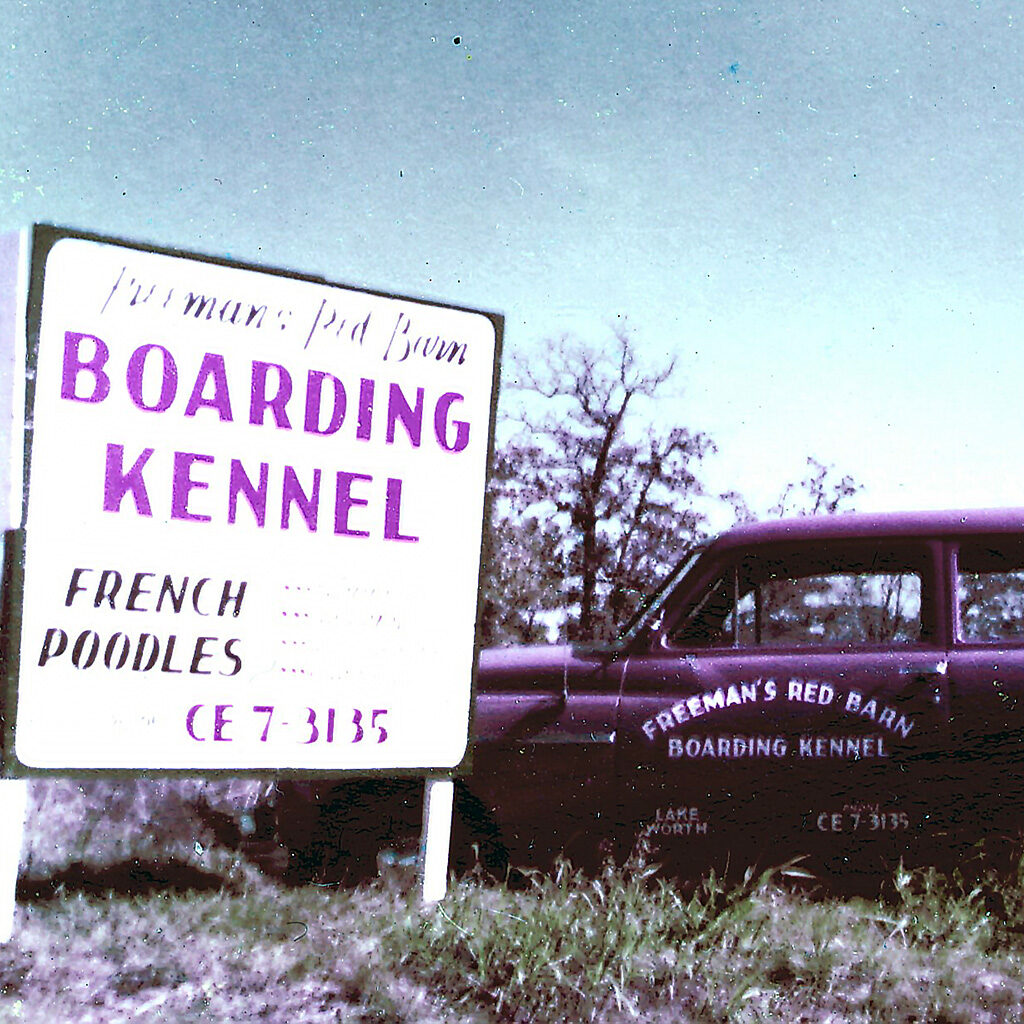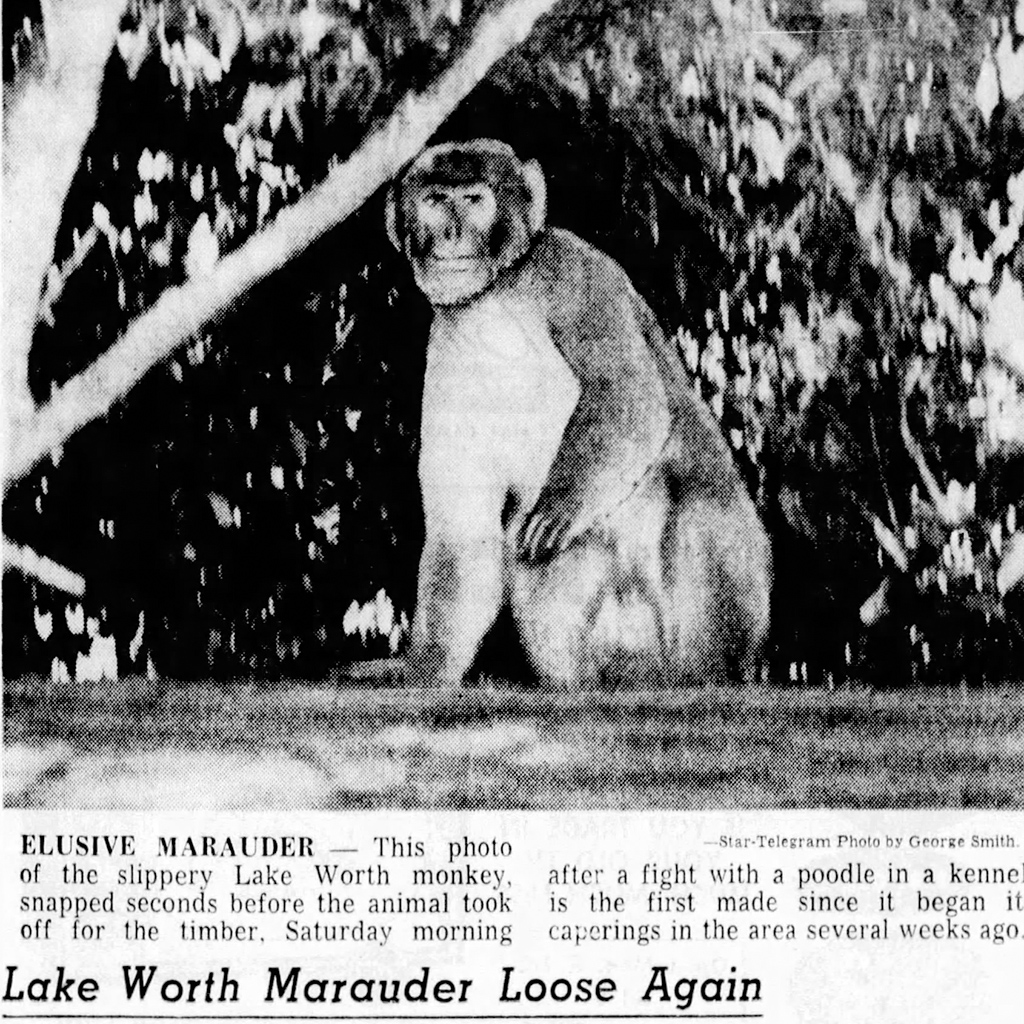Compiling the history of the Fort Worth Nature Center & Refuge is a never-ending process and involves scouring literally thousands of sources. The process is both enervating and invigorating as each unraveled historical thread leads to yet another story to be untangled. Of course, as a natural area, Nature Center history predates the 1964 formal beginning of the park. After almost a quarter century here at the Nature Center, I feel that I have a pretty solid grasp on the history of the property, but even so, a simple phone call or email can introduce a totally new rabbit hole to be explored.
Such was the case this past spring when I was contacted by Missy Watson, who was researching her family’s history. She asked if I knew where her grandfather’s home had been located. She explained that her grandfather, Jay D. Freeman, had operated Freeman’s Red Barn Boarding Kennel in the 1950s and 1960s.
Atop Canyon Ridge Mesa lies a grouping of broken concrete foundations that Refuge old-timers have long referred to as the “Kennel Site.” A description of the site convinced Ms. Watson that it was the location in question. She, along with her father, visited the Refuge in April 2021 to return to the family homestead. It was an honor to reunite the family with their past, and I gained tidbits of Refuge history (such as the name of the kennel and the fact that Mr. Freeman raised poodles) regarding an oft-referenced landmark.

Ms. Watson also provided me with an unusual historical thread on which to pull by asking if I had heard of the “Lake Worth monkey” and giving me a copy of a 1959 Fort Worth Star-Telegram article. This innocent question and random newspaper article led me down a convoluted path to piece together the following story.
The tale begins in the middle of June 1959, when Haskell ‘Hack’ Markum’s pet rhesus monkey escaped. Hack owned Markum’s Tin Top Quick Stop service station on Jacksboro Highway. At the time, exotic animals such as monkeys — and even big cats and elephants — were sometimes used to lure customers into a business. Mr. Markum passed away in 1984, so there’s no telling how or when Hack acquired the monkey. However, pet monkeys were frequently advertised for sale in newspaper classifieds in the 1950s.
The escaped monkey did not appear in the news until early August 1959, when his escapades were described as “roaming and molesting various living creatures in the area.” According to newspaper reports, the monkey was attacking and stealing food from pets and livestock on the west end of Lake Worth. Residents were up in arms and even tried to capture the escaped simian. A WBAP news story introduced William Henry, who, adorned with a knife and pith helmet, sought to “lure the monkey into his station wagon” in the Wildwood Park area. Henry, described as an expert animal caller capable of calling up “deer, coyote, foxes, wild cats, and mountain lions,” attempted to call the monkey, but his calls fell on deaf ears.
On August 18, 1959, another newspaper story reported that the elusive monkey was spotted in the backyard of a residence along Jacksboro Highway, 3.5 miles northwest of Lake Worth, which, if reported accurately, would place it about 1.5 miles northwest of the current Nature Center entrance but adjacent to the current Nature Center boundary. Pat Markham, another “monkey hunter” (who also happens to have a last name suspiciously close in pronunciation to Hack Markum, the monkey’s original owner, and possibly a relative victimized by a misspelling), stated the “pesky critter was just as slick and healthy as when first spotted about two weeks ago.” Other reports stated that the monkey had been wounded by an armed searcher the week prior.
The “Lake Worth Marauder,” as the monkey came to be known, avoided capture and the media until the evening of September 5, 1959, when Jay D. Freeman, owner of Freeman’s Red Barn Boarding Kennel, reported the monkey on his property. Apparently, the monkey had taken up residence at the kennels 10 to 12 days prior and had formed a relationship with Daisy, a dachshund pup. The monkey was reported to have carried Daisy in its arms and groomed the pup in search of stray fleas. Mr. Freeman was accepting of the monkey’s presence until a fight broke out between the monkey and one of Mr. Freeman’s French poodles, which resulted in the poodle suffering a serious neck injury.
Mr. Freeman attempted to trap the animal without success but did call a Star-Telegram reporter, who captured the only known photo of the elusive primate. Unfortunately, the photographer’s flash spooked the wary animal, which promptly hightailed it for the woods, most likely the wooded hillside extending from Canyon Ridge Mesa down to Shoreline Road leading to Greer Island.
The September 6, 1959, Star-Telegram provides the final report on the first, and hopefully last, free-ranging monkey in the area known as the Fort Worth Nature Center & Refuge as Mr. Freeman “shot the wily ape upon authority of O. D. (Dutch) Carroll, Lake Worth Officer.” Mr. Freeman donated the carcass to the Children’s Museum (now the Fort Worth Museum of Science and History). It isn’t known if it is still a part of their collection, but I am trying to track it down.
And so goes another search for Nature Center history. Who would have thought that for at least a short time, rhesus monkeys were part of the Refuge’s fauna list?




